How Do Chickens Mate? (With Pictures And Videos)
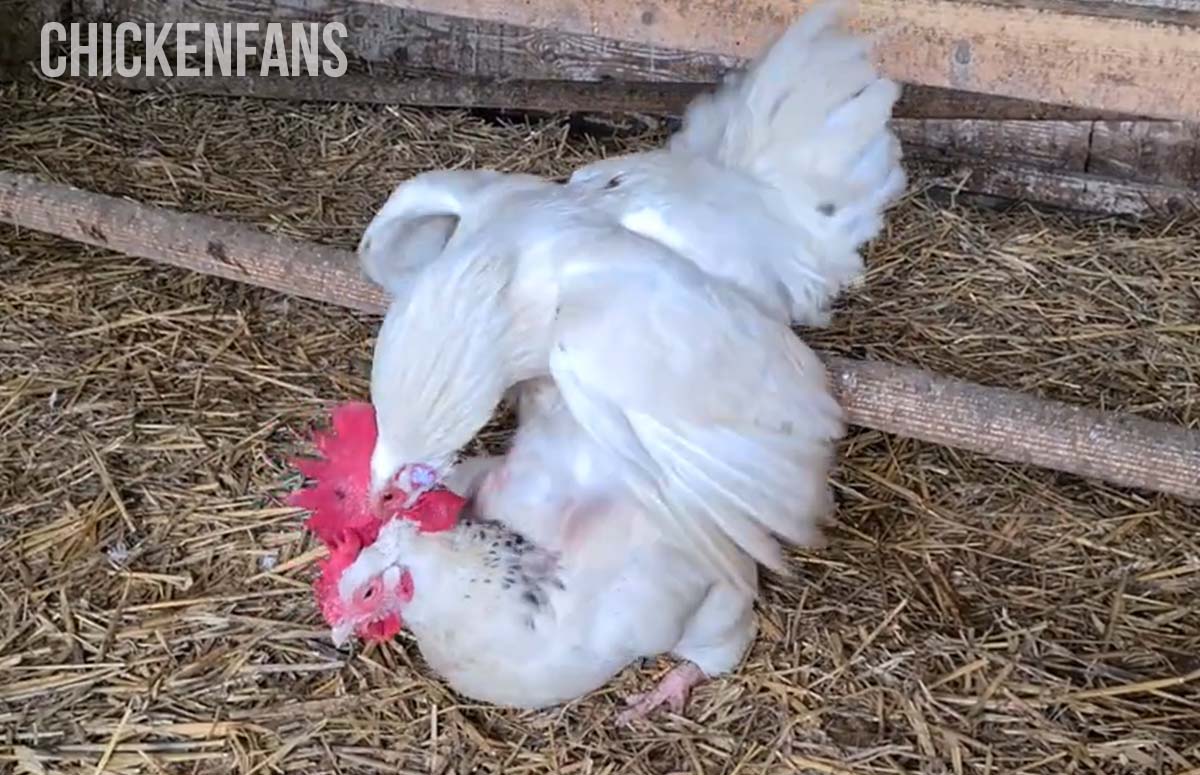
When observing chickens mating, you may find it fascinating, amusing, or unimpressive. There are recognizable patterns in the process, from courtship to mating. However, specific questions may arise: Why do hens lay unfertilized eggs? How do roosters mate without a penis? In short, how do chickens mate? Let’s find out.
How Do Chickens Mate?
Chickens mate through courtship displays, with the rooster balancing on the hen’s back. The act involves rubbing their cloacas together, as roosters lack penises but do have internal testicles. During this rubbing, the rooster will transfer sperm that will transport through the hens’ reproductive tract.
But there is more to it than the act of mating alone. Let’s delve deeper into the subject. But first, let’s see a video of how the chicken mating process is done.
The Courtship
The mating process’s first part starts as you’d expect. The rooster’s hormones kick into high gear, and he tries to impress the hens around him. This is done in various ways, the main of which you may have seen from other birds on Animal Planet or pigeons on the street. The rooster puffs up his feathers and starts circling the hen to try and impress her.
This will often work, but the rooster has a few more tricks up his feathers when it doesn’t. For starters, while he’s courting his mate of choice, blood also flows into his comb, making it larger, redder, and more impressive. This is supposed to signal vitality and good health, i.e., the rooster is worth mating with.
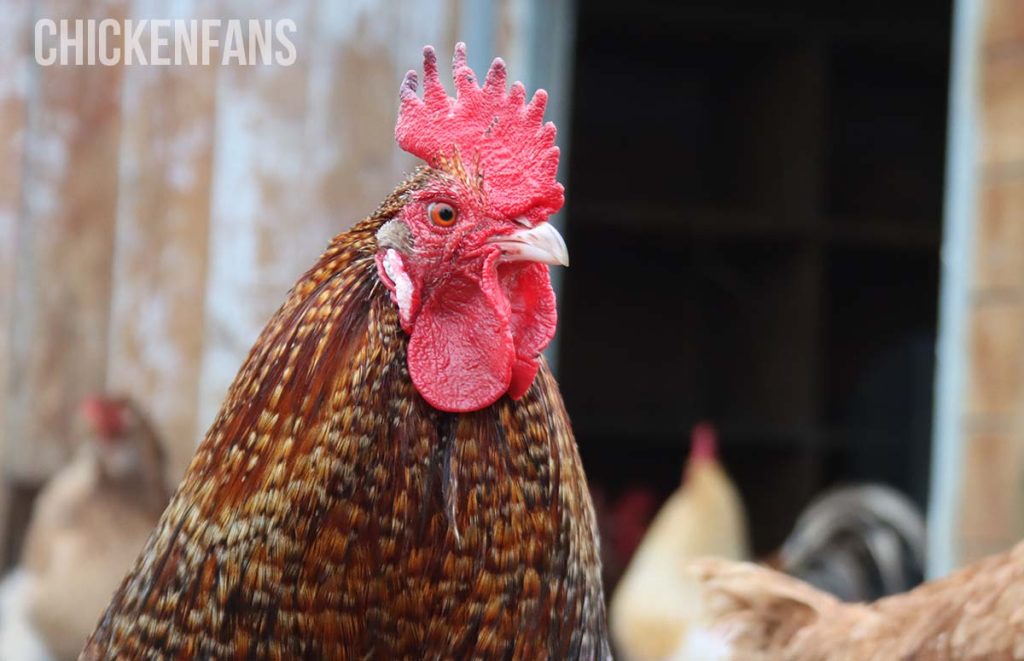
While circling around the hen, the rooster will often fan his wings around to make himself look bigger and more impressive. This move is often called a wing drag or wing flicking. Another thing roosters do is crow even more than usual to remind everyone of their presence.
Rejected Roosters
If all that still doesn’t work, the rooster tries to put himself in the hens’ good graces by buying them dinner – or, rather, finding them something to peck at on the ground. This behavior is typically called tidbitting. When the rooster finds something potentially edible on the ground, he’ll pick it up with his beak and toss it in the air. Seeing this, nearby hens will often come and take the rooster’s offering, giving him more opportunities to wing drag around them.
If all of this fails, a rooster mostly ignores a hen’s consent and mates with her regardless of whether she agrees. This is also why providing enough hens for one rooster is essential. Foresee at least six to ten hens per rooster.
The Act of Mating Itself
Irrespective of whether it happens consensually or not, the act of chicken mating always looks the same. The rooster jumps on top of the hen and tries to balance himself by “threading” with his feet on her back while biting the feathers on her neck for extra support. Meanwhile, the hen will squat lower to the ground and spread her wings to assist and stabilize her mate.
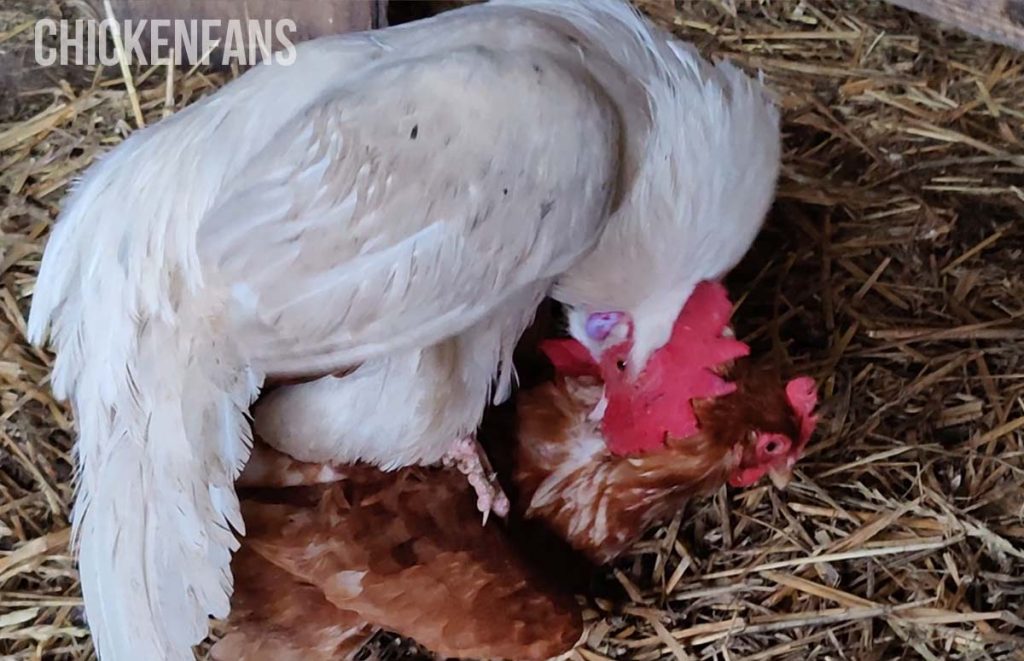
The hen will always squat even if she wasn’t fully onboard with the whole hullabaloo in the first place. She does that mainly out of instinct but also because the mating process is often quite destructive to the back and wing feathers of hens and the smoother it goes, the less damage their plumage suffers.
Once the rooster is stable on the hen’s back, the mating proceeds more or less as you’d expect – or at least it looks that way at first. The hen will perk her tail up to expose her bottom, the rooster will lower his tail above it, and contact will be made.
From there, the rest of the “intercourse” takes no more than a few seconds or about half a minute in total, including the troublesome process of the rooster mounting the hen. After that, the rooster jumps off and goes about his business, and the hen proceeds to straighten her feathers and wander around too.
Remember the part about roosters not having penises, however? How does this feature into the whole equation?
Chicken Reproductive System
If the courting rituals of chickens are similar to those of other birds and the act of mating is not unlike those of other species when looked at from afar, what is unique about the reproductive systems of hens and roosters? Let’s start with the case of the rooster’s missing attribute.
How Does a Rooster’s Reproductive System Work?
A lot of animal species have something called a prepuce or a “penile sheath”. These are effectively retractable penises – a very convenient system that protects the male’s reproductive organs while running around the wilderness. Still, it also allows the male to quickly “take it out” when it’s time for mating.
When looking at roosters, you’d be forgiven to assume that something similar is happening here, too, yet, that’s not the case. Roosters don’t have penises. Instead, they have something called a papilla. This is a tiny nub on the edge of the cloaca vent – the chicken’s only exit vent for anything, be it waste, eggs (for hens), and sperm through the papilla for roosters.
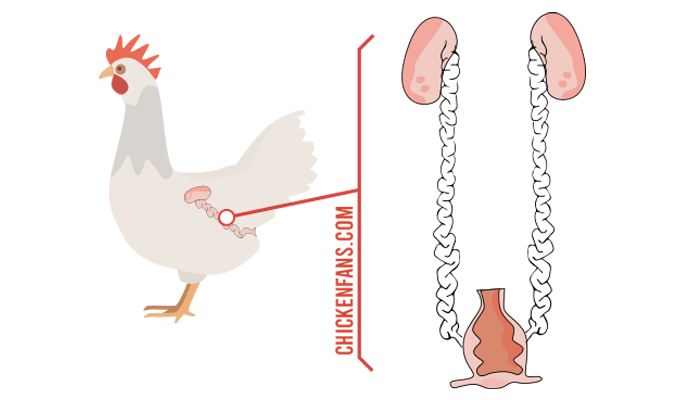
This papilla nub effectively functions as a penis by distributing the rooster’s sperm from its testicles into the female. Some people even call the rooster’s papilla an “internal phallus,” but it doesn’t have any of the other characteristics of a penis, and it doesn’t penetrate the hen – it just rubs on her and literally squirts the sperm onto the hen’s cloaca during intercourse.
In other words, when you see the rooster mount the hen in a seemingly familiar fashion, the two are performing what’s called a “cloaca kiss”, i.e. they are just touching their butts.
Do Roosters Have Testicles?
Roosters do have testicles, however, although they are entirely internal too. Not only that but they are so far up into the rooster that they are basically inside his back, attached to the inner side of the spine and near the base of the neck. They are connected to the papilla and the cloaca via the lengthy vas deferens – two tubes that transfer the sperm to the papilla and help push it out of it through internal pressure when the time comes.
If it all sounds a bit too bizarre, you may also find it curious that the same applies to about 97% of all known bird species on the planet right now. Male birds with penises are the exception. We know that birds used to have penises, especially back when they were still dinosaurs. And we know that they have the genes for penises that are quite large compared to the birds’ size. In fact, the few modern-day birds that do have penises, such as ducks, for example, are indeed quite well endowed.
These penises never developed in roosters because of a protein called Bone Morphogenetic Protein 4 or BMP4, which kicks into production around the ninth day of a male chick’s life. This will prevent the development of the penis. It’s not exactly clear why that’s the case, but the likely evolutionary reason is that having a large penis while trying to fly around or waddle on the ground with short legs can be cumbersome.
If you want to learn more, you can find a more detailed article on the rooster’s lack of a penis here.
How Does a Hen’s Reproductive System Work?
In principle, a hen’s reproductive system looks similar to that of a rooster, even though it’s a lot more complex. The hen’s reproductive organs are internal; the ovary is very deep into the bird’s body and under her back. It’s connected to the cloaca via a long tube with multiple chambers called an oviduct, and it ends with the sperm host glands in the cloaca – the hen’s glands that “take” the sperm from the rooster during copulation.
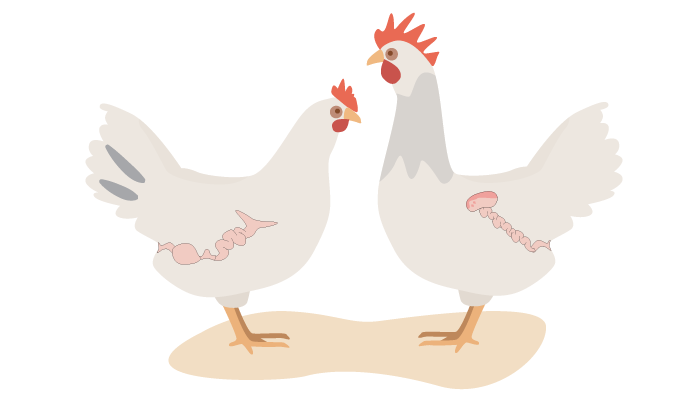
The oviduct transports the rooster’s sperm up through the uterus, the isthmus, and the magnum and into the infundibulum. The same series of chambers in the oviduct then transport the fertilized egg back down to the cloaca and push it out.
As for what all these terms mean, you can check out a more detailed article on the hen’s reproductive system here.
After the sperm host glands “receive” the sperm, it starts to transport itself into the hen through the oviduct.
Once (some of) the sperm reaches the infundibulum at the end of the oviduct, it fertilizes the hen’s egg yolk. Hens are born with two ovaries, but only one matures and starts producing eggs.
All About Eggs
Hens are born with a set number of egg yolks in the ovary that they release one after the other throughout their life. So, there is always an egg yolk coming out of the ovary and passing through the oviduct whether or not the hen has mated. That’s why hens lay eggs even if they haven’t seen a rooster.
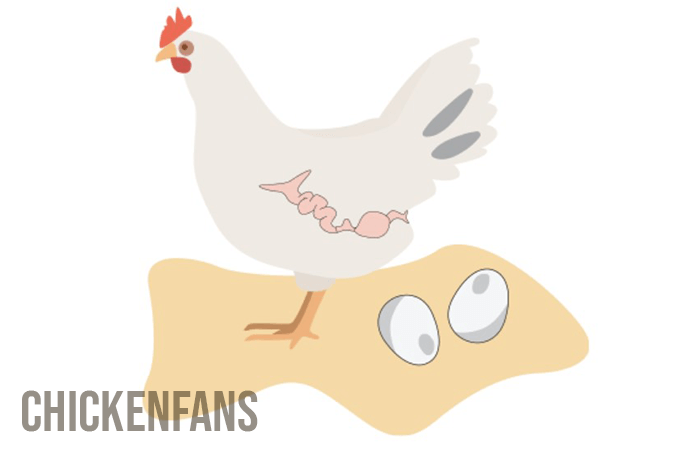
After the sperm has fertilized the egg yolk, it starts going down through the magnum, isthmus, and uterus while slowly forming into an egg on the way down. The whole process of egg formation takes about 20 hours. Then, the hen lays the egg, typically in the morning.
The hen doesn’t start brooding her egg immediately after laying it, however, as the brooding process takes three whole weeks. Instead, the hen leaves the egg in the nest as it can survive for about 12-14 days, and she does her business. Once the hen has laid about a dozen eggs – called a clutch of eggs – in the span of those two weeks, she’ll start brooding them all simultaneously to save time.
In Conclusion
Mating in chickens is not too dissimilar to that in other birds or mammals. The male delivers his sperm to the female, the sperm fertilizes the egg, and the hen lays it out so it can hatch. What is unique between roosters (and most other male birds) compared to mammals, is the evident lack of a penis.
Furthermore, the fact that chickens lay unfertilized eggs daily with or without a rooster is even more unique as other birds don’t do this.



















